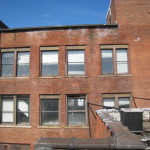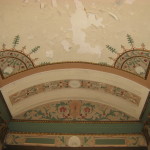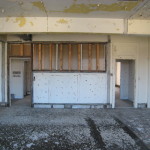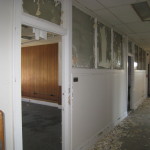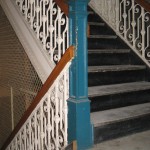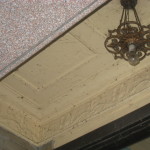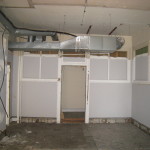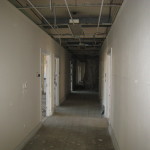The Union Building, a $25 million redevelopment of an 85,000 square foot, eight-story historic office building with first floor retail. Originally built in 1905, the building is located at 1836 Euclid Avenue in downtown Cleveland, Ohio, on the Cleveland State University campus.
Type:
Location:
Size:
Our Goal:
Our Challenges and Solutions:
Navigating Complex Financing
- Challenge: Previous attempts had been made to redevelop the building and the result was a mix of legal and financial problems: The building was in foreclosure with a myriad of liens and other issues, including an incomplete title.
- Solutions: The base funding was a combination of equity and bond financing made possible by the long-term lease with Cleveland State University. However, to make the project viable and with competitive market rents while restoring the historic characteristics of the building, we secured more than $5 million in combined State of Ohio historic tax credits and federal historic-preservation tax credits.
Building a Team
- Challenges: We had to earn the trust and cooperation of the bank, the previous ownership group and the lien holders to gain control of the building and guide all parties through the purchase process.
- Solutions: We enlisted a team of architects and consultants with specialized talents to help prepare the applications and help coordinate the tax credit process. We also maintained a line of regular communication with the state development department, the Department of the Interior, the bank, Cleveland State University and Northeast Ohio Medical University (NEOMED).
Having a Vision
- Challenges: The existing condition of the building made it tough to envision the outcome of a redevelopment plan. It was vacant for more than six years and the negligence showed in peeling paint, deteriorated floors, broken windows and many other problems. Its systems were antiquated and in some cases not functioning. However, the structure of the building was solid and worth saving and the floor plan was still considered efficient even in today’s standards.
- Solutions: We created branded marketing materials that incorporated construction and design renderings and floor plans and held building tours to describe a vision of what it could be. Our vast construction experience made the estimating of costs both possible and realistic.
Identifying the right tenant
- Challenges: A lack of associated parking to the Union Building made the building less marketable to many potential tenants.
- Solutions: Early in the process we identified Cleveland State University as the most likely tenant. The proximity to the campus and CSU’s existing parking locations eliminated the parking issue. With CSU’s need to consolidate office space from off-campus buildings and find a home for NEOMED, we were able to focus our attention on the design, specifications and space needs of the various CSU departments now located in the Union Building.
Our Result:
We ultimately purchased the building, negotiated a long-term lease with Cleveland State University and completely redeveloped it using current technology and standards while maintaining its historic qualities and character. The building features new and efficient HVAC, utility, fire safety, communications and security systems. Its energy-efficient building envelope features include windows (over 300), storefronts and roof system that continue to honor the historic character and look of the building.
The Union Building today is fully-occupied and houses various Cleveland State University departments and is the first home of the collaboration between CSU and Northeast Ohio Medical University (NEOMED) as well as various retail tenants on the first floor.
The Union Building has been honored by the Cleveland Restoration Society, the Ohio Department of Development and was a runner up in the 2013 NAIOP awards for “Redevelopment of the Year.”
